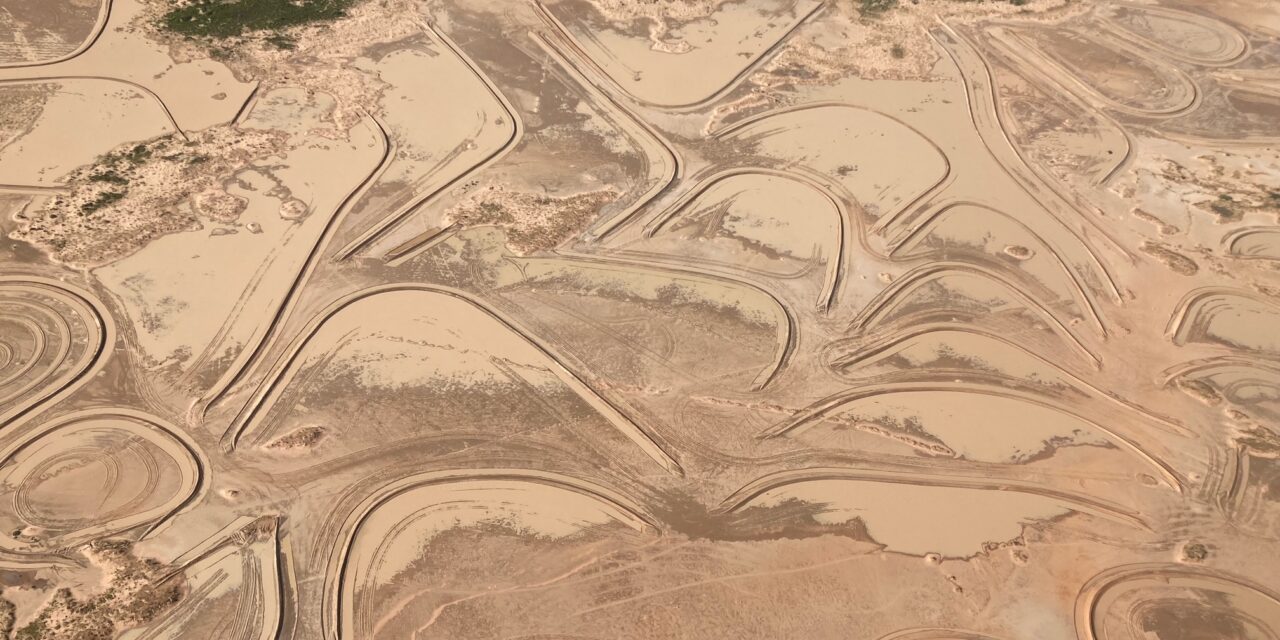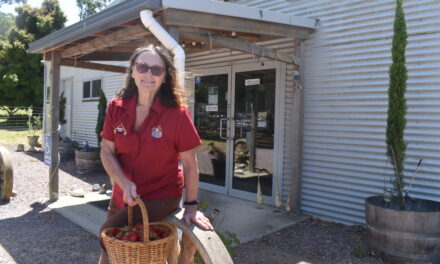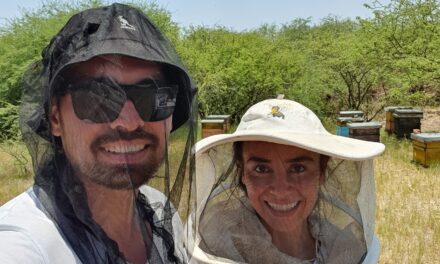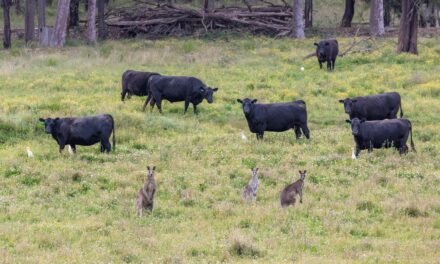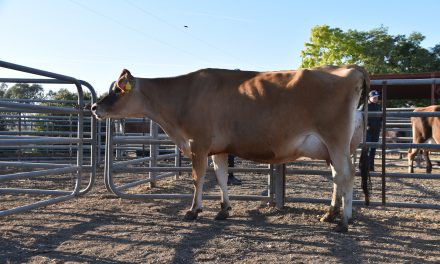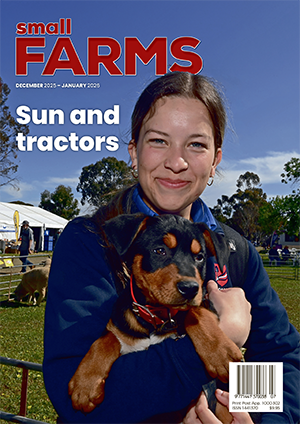When you are out the back of Bourke, properties are usually measured on the scale of small European countries. But big land doesn’t necessarily save you from being a small farmer more often than you would realise, writes ANDREW MOLE.
Just outside Wentworth, one family steeped in pastoral tradition happily conceded, depending on the rain, their business lurches between being a small farm and a slightly bigger one
If someone told you they were running more than 31,000 hectares — and then told you they were, from time to time, a small farm, you would almost certainly feel your eyebrows raise of their own accord.
But it’s true.
In a good year Kelly and Gus Whyte can run as many as 9000 Merino and first cross sheep across their two stations in the pastoral lands of western NSW.
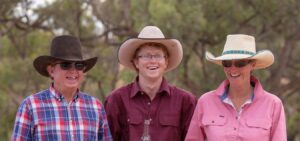
But in a not-so-good year than can plummet to just 2000. A bad year could be even worse.
This year the Whytes are splitting the difference, and will shear about 6000 sheep, which Gus said will be 4500 adults and the rest weaners.
And if the rain gods have been in a really good mood, there is also room for a few beef cattle — currently that’s 37 red and black Angus of their own and another 78 black Angus on agistment.
If you find that hard to follow, how about this?
For the past two months (and a bit) the only way for the grazier couple to get home has been by boat. The Anabranch has been in flood and still was at the time of writing.
The boat, by the way, means a 4km trip each way to ferry folk and food in, and folk and equipment out.
“You can do a shorter trip — it is a mix of kayak and a lot of wading — but it only gets you in and out, any supplies or equipment and it’s back in the boat,” Gus laughs.
Incredibly, though, as the Whytes sit on their domestic island, Gus says things elsewhere on their properties are starting to get a bit dry and some rain wouldn’t go astray.
And even Gus sounded a little embarrassed when he mentioned that.
But when you have that many hectares, it’s all about where the precipitation participates.
“Our sheep numbers are based on the rain and available feed. We measure this through using a ‘12 month rolling rainfall’,” he said.
“This shows trends wetter or drier and gives us good indication of an impending drought, so we are able to sell earlier. We also go in the paddock and measure available pasture and look to put together feed budgets, in order to do this you just need to know how many and what class of stock you have, then how much they eat (a chart is available from your local Ag dept)— there have been years we have shorn just 2000, and that’s across both properties.”
Based on Glendonald and Woodoona bloodlines, the Merinos average 21 micron while the crossbred program uses White Suffolk rams, which ups the micron count slightly in those ewes.
Then there is the opportunity cropping program. And that’s another world altogether, moving the Whytes from small farmers/big farmers to (very) occasional farmers.
“You can’t factor it into your planning, but when it does come you don’t want to miss out,” Gus said.
“The cropping land is contained in three separate lake beds that, after a flood, can be farmed under permit.
“We have no control over when the lakes dry out, so we need to be flexible on what we plant, while we prefer to grow cereals, if they dry out in spring a summer crop like sunflowers might be suited.
“With all the rain we have had we are certainly planning to crop the lakes — we reckon they should be ready about this time next year.”
So how occasional is opportunity cropping out Wentworth way?
Well, the last time the Whytes raised a crop was 2012-13, so it’s more a decade decision that an annual business plan.
Otherwise, when you live in the western pastoral lands, any problems you tend to have, tend to be big.
Because out there, somewhere in the back of Bourke (or just north of Mildura) it’s bloody big country.
But that also hasn’t stopped Kelly and Gus from chipping away here and there in a bold plan to literally rehydrate their land (Anabranch notwithstanding).
As part of the Rangelands Living Skin project, their initial trial is only covering about 300ha of their combined 31,500ha across two stations (Wyndham is 12,500ha and they have had it since 1998 and Willow Point’s 19,000ha have been in the family since 1920), but it’s an encouraging start according to the Whytes.
The rain equation was behind the Whytes joining a group of NSW producers running trials of low-cost, scalable practices that offer possible solutions to increase farm income and landscape function.
They opted for trialling water ponding as a strategy to repair and rehydrate their rangelands country.
Water ponding is a mechanical intervention, appropriate on gentle slopes, to slow the flow of water across the landscape and encourage water infiltration into the soil.
This approach is used to reclaim scalded country and rehydrate rangeland landscapes.
Gus said they were able to access a two-for-one grant through the Local Land Services, which came to $10,000, to kickstart the water ponding project.
The Whytes contributed $5000 and LLS provided the surveyor and directed and oversaw the contractor who constructed banks.
“Water ponding needs a fair bit of planning to make sure the banks are going in the right spot,” Gus said.
“Producers should do water ponding projects in conjunction with, and under the instruction of, someone who knows what they are doing.
“Our goal is to always improve productivity and this option through the LLS gave us an excellent chance to try something we had been thinking about for a while.
“The rain that falls on the area we have ponded simply runs off, and runs off fast, and disappears into lower dryland.”
Enter senior land services officer Paul Theakston, who says the Western LLS Rangeland Rehabilitation Program is also keen to see how this water ponding will reinstate natural surface water flows.

“Gus and Kelly’s project area originally would have acted like a ‘sponge’ with shallow ponds (called gilgais) absorbing water into the soil and excess water being slowly released as low-energy flows,” Paul said.
“Projects such as water ponding, water-spreading banks and diversion banks reinstate these natural water flows and landscape function.
“We hope to see erosion and claypan rehabilitation projects on many properties in the rangelands.”
Paul, who has been working on rangehood rehabilitation since 2010, says in a nutshell, the project is designed to “not let water disappear down erosion gullies” but to be retained for a much slower spread to better help create the future landscape.
He said he met with the Whytes at their chosen sites and it was his role to design and layout the locations of the ponds.
That starts with a meeting with the landholders to get a clear understanding of exactly what they are looking for.
“It’s nearly always different on every property, even people who want the same project can often have different goals, so we try and provide options so the landholders can choose the solution that works best for them,” Paul said.
“In most cases there is the same underlying target — rehydrating the land, which is usually intact rangeland, with native grasses which haven’t been cleared or impacted by introduced exotic species.
“For Gus and Kelly the system we designed is a series of U-shaped ponds, which operate on a catch-release concept, with rain being held behind each pond wall, and then as that pond fills, it releases water to the next pond down the slope, and so on.”
Paul said there was a 10-year protocol in place to monitor these projects — through techniques such as photo points — as well as his personal visits.
He said the visits weren’t a formal part of the program but he finds them educational and well worth the detours if he is in the area of one of the properties where he has been involved.
“There isn’t a lot of science behind this just yet, so you need to be part artist and draw on a lot of experience to try and get it right,” Paul said.
With the whole water ponding project covering those 300ha after the Whytes settled on its site in February last year, they selected two sites with Paul which could be monitored.
Gus said once the planning was complete, they brought in the heavy machinery between February and June to construct more than 60 of the U-shaped earth banks, measuring 500mm high at their peak and 2m across at the bottom.
Although construction had to be put on hold across April and May because of too much rain — as constructing water ponds is much easier and longer-lasting when done with dry soil.
The Whytes and collaborating scientists will monitor the water ponding works to map changes in soil, pasture, production and biodiversity. It will be compared with a control site (not ponded) and reference site (a paddock in good condition as it receives good water flow already).
The expectation is for the ponding trial areas to regenerate and, in time, look more like the reference site.
So far, Gus has observed that the ponds have retained a lot of water.
A year after construction began, the ponds are already influencing the landscape.
“There’s certainly an increased growth of saltbushes and other perennials in places where there were previously no plants,” Gus said.
The Whytes are also looking forward to the scientific studies with project partners to understand other types of soil and landscape change — such as soil carbon, water infiltration and microbiology — to better understand and explain the value of landscape and soil stewardship practices.
Initial results from these trials will be published later this year.
“We could have stretched this out to 600ha and we hope to improve a lot more than this, for example, we are hoping getting better control of this water will have a positive impact on the black box woodland which borders it,” Gus said.
“Our experience would be if we maintain the property, with good livestock management, grazing and resting on a rotational basis, and we will maintain the ponding banks so they are long lasting we will be able to change the landscape.”
At the same time as the ponding, the Whytes are also constantly looking to change the future of their business, so they’re not stopping there.
Gus said next cab off the rank was likely to be a goat operation. Starting small with maybe 400 nannies — a mixture of ferals and bought-in genetics with the target animal one Gus describes as “not too big and rangy” but which will dress out well.
“They obviously do well in our type of country, but the genetics we will probably introduce will be for a smaller, meatier animal,” he said.
But if the ponding project seems a smidgen small, and the goat plans initially conservative, they all pale in comparison with the fencing project the Whytes have planned to protect their grazing land from kangaroos.
“We are going to run an electrified, eight-wire fence around 6000ha because the roos are just smashing us,” Gus said.
“We move the sheep on as part of our rotational program, but if we don’t do something that land never really gets to recover because the roos move in and they can east so much so quickly.
“At any one time we are only grazing about 10 per cent of our total land, but the roos are working on a much bigger scale than us, so when they do move in it really hurts.”
Which is what Gus is planning to fix, because he and Kelly love a project. Whether it is small or big depending on whether it is a small or big farm year.

